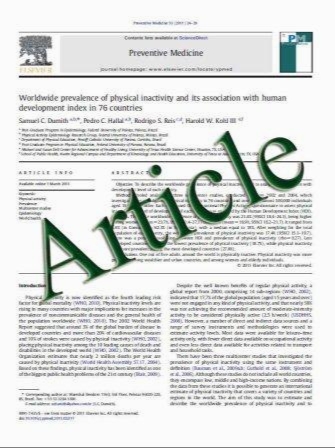The cerebellar component of Friedreich’s ataxia
- نوع فایل : کتاب
- زبان : انگلیسی
- مؤلف : Arnulf H. Koeppen Ashley N. Davis Jennifer A. Morral
- چاپ و سال / کشور: 2011
Description
Lack of frataxin in Friedreich’s ataxia (FRDA) causes a complex neurological and pathological phenotype. Progressive atrophy of the dentate nucleus (DN) is a major intrinsic central nervous system lesion. Antibodies to neuron-specific enolase (NSE), calbindin, glutamic acid decarboxylase (GAD), and vesicular glutamate transporters 1 and 2 (VGluT1, VGluT2) allowed insight into the disturbed synaptic circuitry of the DN. The available case material included autopsy specimens of 24 patients with genetically defined FRDA and 14 normal controls. In FRDA, the cerebellar cortex revealed intact Purkinje cell somata and dendrites as assessed by calbindin immunoreactivity. The DN, however, displayed severe loss of large NSE-reactive neurons. Small neurons remained intact. Labeling of Purkinje cells, basket fibers, Golgi neurons, and Golgi axonal plexuses with antibodies to GAD indicated normal intrinsic circuitry of the cerebellar cortex involving c-aminobutyric acid (GABA). In contrast, the DN displayed severe loss of GABA-ergic terminals and formation of GAD- and calbindin-reactive grumose degeneration. The surviving small GAD-positive DN neurons provided normal GABA-ergic terminals to intact inferior olivary nuclei. The olives also received normal glutamatergic terminals as shown by VGluT2-reactivity. VGluT1-immunocytochemistry of the cerebellar cortex confirmed normal glutamatergic input to the molecular layer by parallel fibers and the granular layer by mossy fibers. VGluT2-immunoreactivity visualized normal climbing fibers and mossy fiber terminals. The DN, however, showed depletion of VGluT1- and VGluT2-reactive terminals arising from climbing and mossy fiber collaterals. The main functional deficit underlying cerebellar ataxia in FRDA is defective processing of inhibitory and excitatory impulses that converge on the large neurons of the DN. The reason for the selective vulnerability of these nerve cells remains elusive.
Acta Neuropathol DOI 10.1007/s00401-011-0844-9 Received: 7 April 2011 / Revised: 24 May 2011 / Accepted: 24 May 2011


